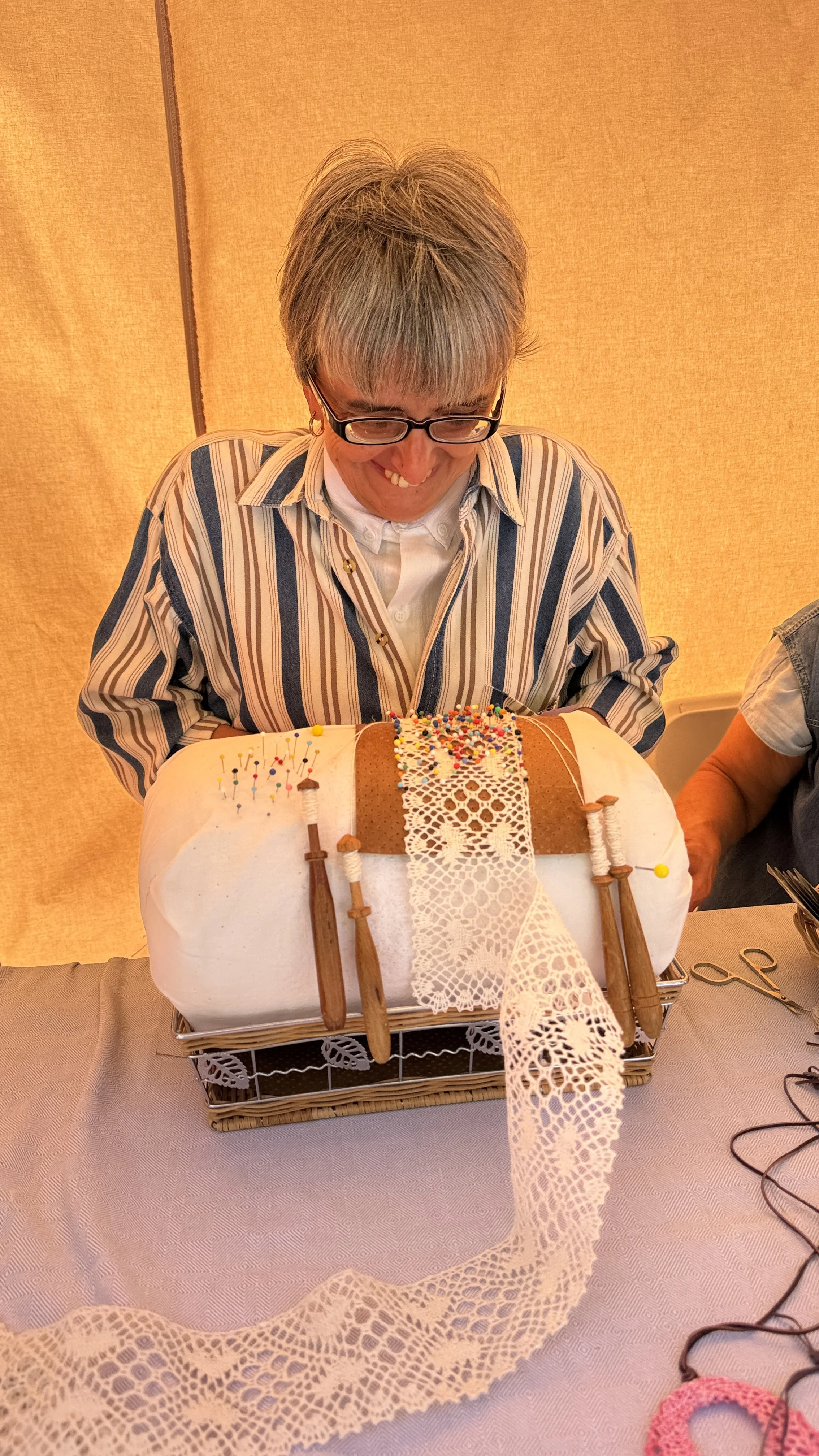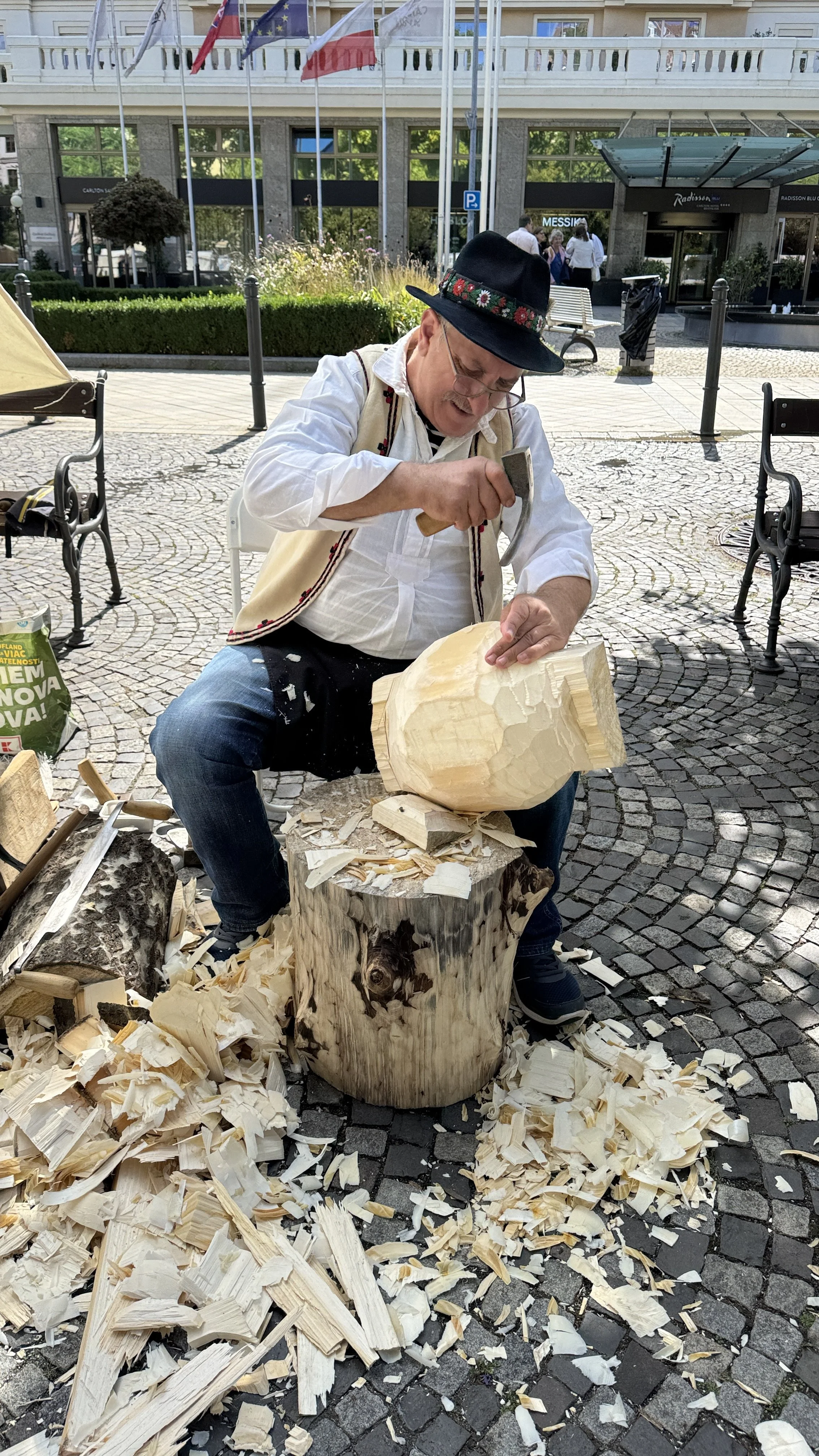Slovakia
The week we spent driving through Slovakia en route to Vienna Airport couldn’t quite shake the lasting impressions of our wonderful month in Poland. Still, this small country has its own charms. The drive through the Tatra Mountains, part of the Carpathian Range, was a refreshing contrast to Poland’s mostly flat terrain.
We enjoyed lush, green landscapes with rolling hills, forests, and meadows, traveling through wide and narrow valleys without encountering busy highways. One of the first things we noticed after crossing into Slovakia was the distinct, alpine-style architecture of the houses - cozy and built for snowy winters.
We stopped for a few days at Kaštieľ Kubínyi, a small and comfortable castle hotel, of which we were the only guests. They are usually booked for weddings, then their restaurant opens and the many guests can roam the nice castle grounds.
Randy visited Orava Castle, dating back to the 13th century, a moody baroque construct built into a cliff. The 1922 cult classic Nosferatu was filmed there.
Gitty opted to sketch Orava Castle from several perspectives rather than conquer the 666 steps leading to the upper balcony views of the beautiful surrounding landscape.
For nearly 1000 years, the Slovaks were part of the Kingdom of Hungary until the end of WWI, when they formed Czechoslovakia with the Czechs due to pressures from Russia and the United States. They later became a socialist satellite country of the USSR.
Slavik National Theater
Slovakia was never satisfied with this union feeling under represented compared to the more powerful Czechs and peacefully gained independence during the Velvet Revolution of 1993. Slovakia is now part of the European Union.
The Slovak language feels similar to Polish, but a bit more complicated and with harder edges. We felt the same towards the people, not quite as safe and accommodating. At one highway rest stop, Randy was approached by a somewhat insistent Slovak, all smiles with a hard edge, trying to pawn off a “gold” watch. We never encountered such persistent behavior anywhere in Poland.
Banská Bystrica old town recently celebrated Day of the Constitution on September 1st
Banská Bystrica Castle
We stopped for two nights in Banská Bystrica, a rather scenic town with a colorful pedestrian zone in an otherwise also beautiful environment. Many Slovakian tourists visit the city for its ambience and its proximity to ski slopes during the winter season.
Fresh bread with pickled red onions and lard as a table freebie
Overall, the country seems more rustic and with the clothing style and everything else we felt transported back into the last century. Even the restaurant menus brought back memories of earlier times.
Rather than visit other scenic villages along our way, we opted to spend our final days in the capital city of Bratislava with a cobble-stoned center recognized along with Bratislava Castle as a UNESCO World Heritage Site.
Bratislava Castle
Bratislava escaped the extensive wartime destruction that many of its sister cities in Poland endured.
Art-nouveau Blue Church in Bratislava
The city showcases a striking contrast, where elegant historic buildings from past centuries stand alongside stark, utilitarian structures from the socialist era.
Dining out in the old town center with perfect weather
The Centre for Folk Art Production held their annual traditional crafts fair on our last day with many booths celebrating their heritage of food, crafts, professions, costumes and music, including many demonstrations from master craftsmen and women.
Walking along the promenade of wooden stalls was a lot of fun to experience and fine way to end our time in Slovakia.
Locals practicing for their performance at the folk festival











